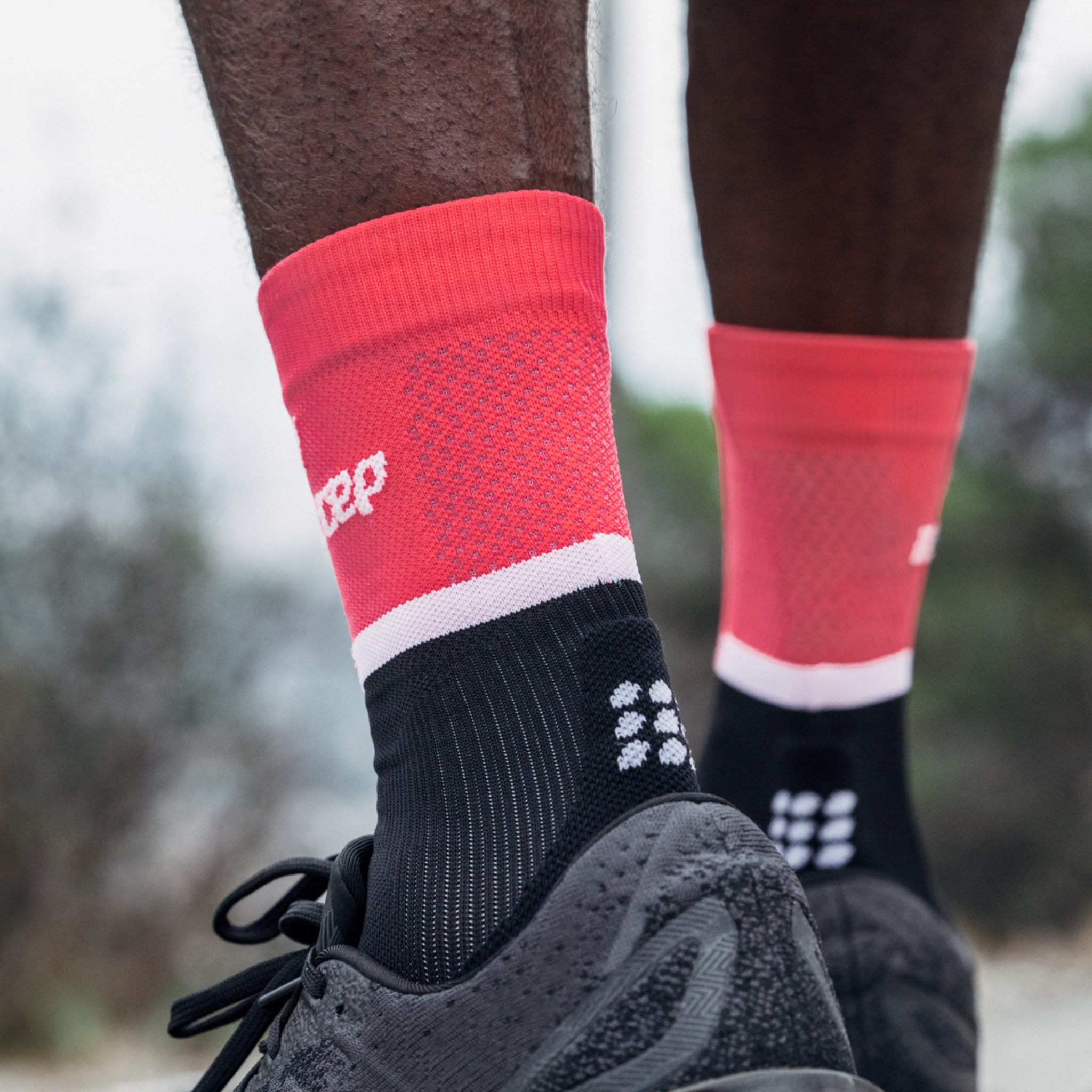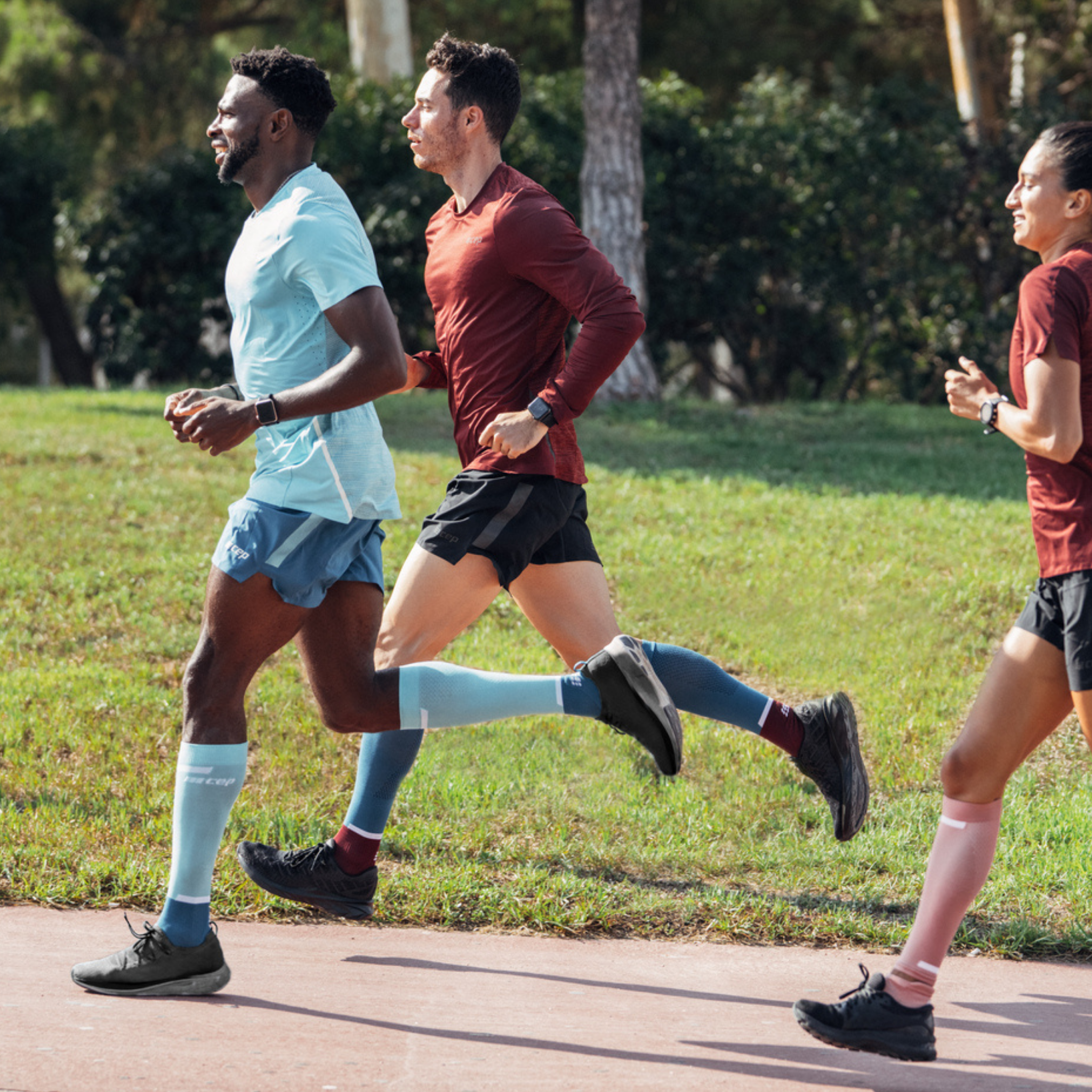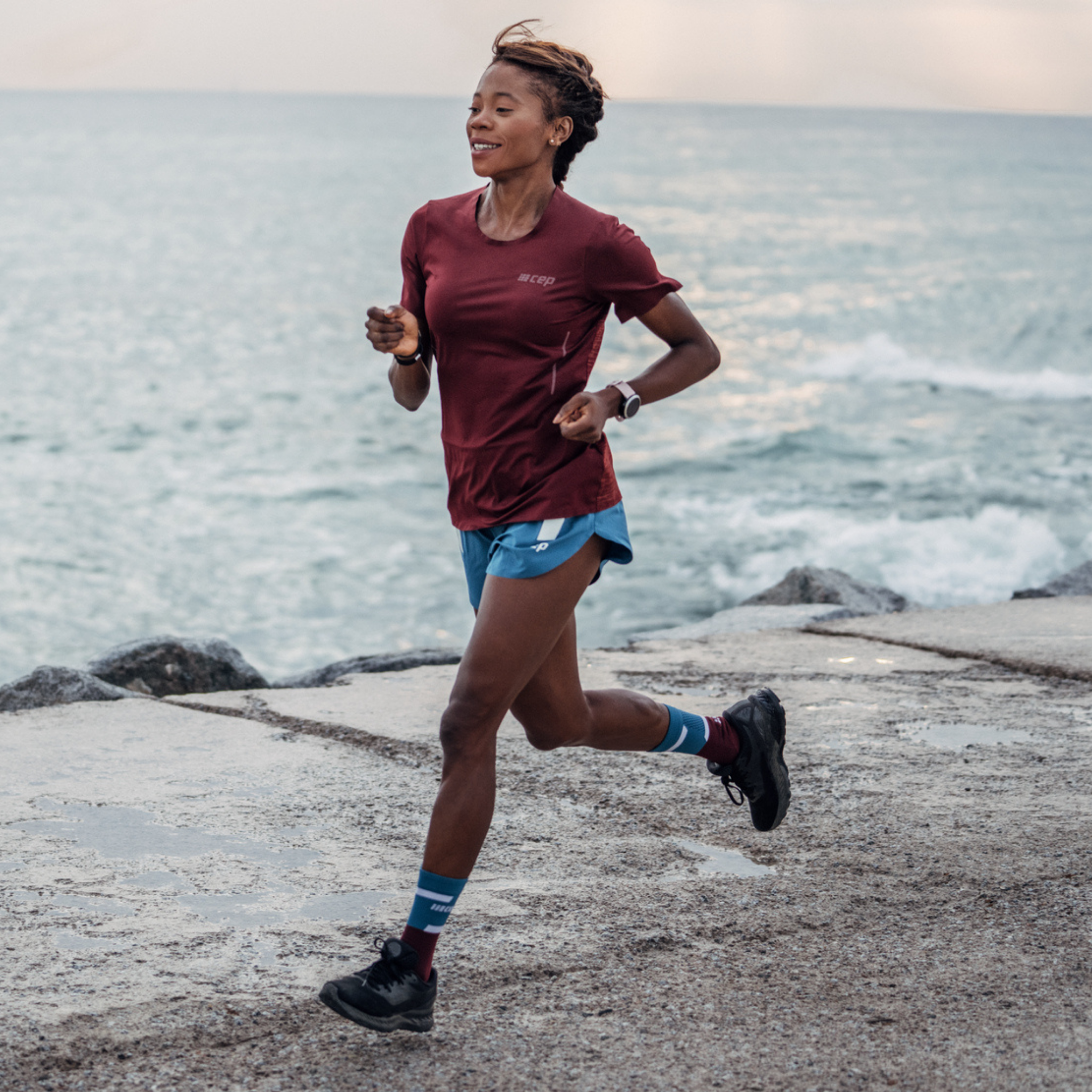BLOG: What are Compression Socks and How Do They Work?
As we get into the nitty gritty season of Marathon training with long runs taking place, trainees hitting their highest mileage yet, and race day jitters starting to creep up, you may notice that your legs aren't feeling quite as fresh as they were back at the start of your training block.
One way to enhance your recovery before the big race day is to introduce compression socks into your recovery routine. You may have seen a long-distance runner wearing compression socks, or noticed a fellow traveler wearing them on a plane. Compression socks are designed to improve circulation. But do they work? Can any tight sock provide benefits?

What are compression socks?
Studies show that compression therapy has many benefits. Compression socks are designed to improve oxygen flow to muscles and tissue. Increased oxygen flow reduces inflammation and swelling, which in turn can improve joint mobility and reduces pain. This can enhance athletic performance and support the body in healing and recovery.
Compression socks come in many different forms for different purposes, to be worn for everyday wear, travel, exercise, or recovery. Tall compression socks extend from the foot up to the top of the calf, just below the knee. Compression socks are also available in mid and low-cut options.
What do compression socks do?
The best compression socks enhance the body’s ability to efficiently circulate blood and deliver oxygen to muscles and tissue. They put gentle pressure on your body to keep your lymphatic system functioning at the highest level. The improved circulation helps prevent blood clots, reduces swelling and helps the body heal. Compression socks aid your body’s natural process to push deoxygenated blood back to the heart to be filtered with fresh nutrients.
How do compression socks work?
The best compression socks are graduated, meaning the compression level is tightest at the ankle and gradually loosens up the calf.
According to Torrie Jackson, director of Marketing from CEP, the graduated “tornado shape” makes compression more effective. “This profile helps to improve circulation in the legs by pushing deoxygenated blood (blood containing lactic acid) back up to your heart faster to be recycled into oxygenated blood, to then be distributed throughout the body,” Jackson says. As a result, circulation is improved and lactic acid gets flushed out.
How do you choose compression socks?
When you choose compression socks, make sure that they fit properly. To determine your sock size, measure your calf at its widest point. You’ll also want to know what level of compression your socks provide. In the medical field, compression is measured in millimeters of mercury, or mmHg, which allows medical professionals using compression therapies to treat patients more precisely.
We recommend socks from CEP because they use precise and defined levels of graduated compression, measured in mmHg. CEP products come from Medi, the industry leader in pharmaceutical compression.
While you might expect tall socks to make you overheat on a summer day, CEP uses specially designed materials that regulate temperature, minimize odor and prevent blisters, like Trilobal yarn, Feran ICP, HEIQ and Silver treatments. Together the fibers act like synthetic wool to keep you cool on warm days and warm on cool days.
Jackson says that CEP used lab tests to prove that their tall socks can actually keep you cooler than having bare legs in the summer by up to 3.6 degrees.
Does compression on the lower legs affect blood flow in the upper legs?
“Absolutely!” Jackson says. “The calf muscle acts as the heart of the lower extremity, by pumping and recycling blood throughout the legs. This in turn affects the entire lower extremity, helping your legs feel more energized while reducing swelling, cramping and risk of blood clots.”
Who should wear compression socks?
Anyone can benefit from compression. Whether you have plantar fasciitis, you’re a traveler, an athlete, or you’d just like more pep in your step. Compression socks aren’t only for injured legs or for marathon runners.

What are compression socks used for?
Travel
Sitting is hard on the body. Movement helps keep blood flowing and when you sit for long periods of time on a plane or car ride, you’re more at risk of a blood clot, known as deep vein thrombosis (DVT).
Compression socks that offer effective graduated compression reduce pressure and swelling in the legs and feet to prevent blood clots and keep your legs feeling fresh.
Sports
The improved blood flow from compression socks has many benefits for athletes of all different sports. A 2015 article reviewing 24 studies found post-exercise recovery benefits for people who wore compression during exercise.
Compression offers stability and support for muscles and joints before, during and after your workout. Athletes use compression socks to help their legs feel fresh, reduce fatigue, and recover after workouts.
Everyday wear
If you have discomfort from varicose veins or need to sit or stand for long periods of time, compression socks can provide comfort and relief.
Now through October 15th, save 20% on any CEP sock or sleeve at all Fleet Feet Chicagoland locations.

This blog was originally written by Kate Schwartz and posted on September 16th, 2021. It has been modified for Fleet Feet Chicago's purposes.
Connect With Us
See the latest from Fleet Feet Chicago